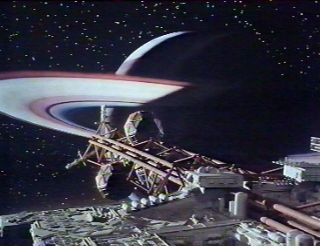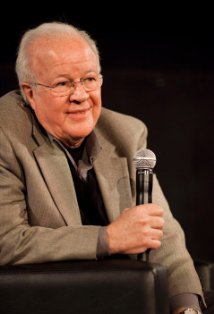Oscar-winner Douglas Trumbull is among a handful of technologists working on new technologies to transform cinema. But adoption is not certain.

This year’s first big “tentpole” movie, “The Hobbit: An Unexpected Journey” pioneered a new film technology, using a recording rate of 48 frames per second (fps) instead of the usual 24 fps. Initial audience reaction in previews was mixed, with some describing the experience as “overwhelming.” Distributor Warner Bros. responded by reducing the number of theaters showing the high-definition version. According to Hollywood special effects legend Douglas Trumbull, there is considerable speculation the two Hobbit sequels will only be released in 24 fps, and the resistance to 48 fps may threaten a high-definition version of James Cameron’s sequel to “Avatar”.
Trumbull is best known for his special effects on such movies as “2001: A Space Odyssey,” “Blade Runner,” and “Close Encounters of the Third Kind.” 2001 was produced using Cinerama, a technology advance in its time which required projection on a curved screen for best viewing. The lengthy “light show” scene in 2001, the Star Gate, was designed by director Stanley Kubrick and Trumbull to draw viewers into the action to make them part of the experience, “and not just a spectator,” says Trumbull. He made his remarks at this week’s GPU Technology Conference (GTC) in San Jose, sponsored by Nvidia.
Trumbull says one problem with director Peter Jackson’s use of 48 fps for The Hobbit was that he didn’t push the envelope. “Jackson did not do anything outside of normal cinematic convention to embrace the potential of higher frame rates. “I believe if you make a movie in a new way you have to have a new approach.” Hollywood is comfortable with its long history of rectangular screens and celluloid projection, Trumbull notes, and had developed a cinematic language to match: wide shows, inserts, over-the-shoulder views, two-camera scenes. If the experience of The Hobbit is any indication, new approaches to making movies have an uphill battle ahead.

The vast processing power of GPUs make it possible to use high bandwidth, high frame rate cameras to capture moving images with clarity never before possible. Trumbull shared with his tech-savvy audience how he and a few other cinema technologists are pushing ahead and exploring how to make movies that use state-of-the-art technology and need new artistic techniques to match. In a small studio near his New England home, Trumbull created a short demo film showing the possibilities available when using 4K, 120 fps video recording in 3D. The process generated 11.8 gigabytes per second, using up a total of 11.6 terabytes of storage. Equipment was donated by Nvidia and Intel, but Trumbull says Hollywood is a no-show. “The movie industry does not seem interested in this work.”
“So much of this comes down to money,” notes Trumbull. “All the elements of movie making are still there, except location; use greenscreen. Visual effects ARE the movie today.” Trumbull says visual effects houses are becoming more and more essential to production but the work is still outsourced and the competition is stiff. In our sister publication TechWatch, we recently reported how one of the best known and most honored digital special effects houses, Rhythm and Hues, is currently in bankruptcy.
“The idea is to create a new window on reality,” says Trumbull. “My work is a proof of concept for a new type of display; something like a holodeck, something like a movie. It all happens to you, not through empathy with an actor.”
Our take
As a young man I would go to VFX-heavy movies like “Star Wars” and “Blade Runner” twice. The first time I’d sit in the middle and watch the story. The second time I would sit in the front row and look at the effects, trying my best to ignore the story and concentrate on the movie magic. I thought Trumbull’s directorial debut, “Silent Running” in 1972 was a masterpiece of blending effects with the story, and I remember being disappointed for Trumbull that the movie did not resonate with the general public.
It seems Trumbull was fighting an uphill battle in those days, and is again today. He has strong allies in the tech business; it dawned on me that gathered in the room at GTC listening to Trumbull was a couple of hundred people who could absolutely revolutionize the movie business, if the movie business would only let them.
As Trumbull noted, “Nvidia-driven graphics acceleration and games are a bigger business than movies; people want to be involved.” But if movies adopt new production systems that make the viewer feel drawn into the action, it will take more than technologists and visual effects wizards, it will require buy-in from financiers and the creatives.





